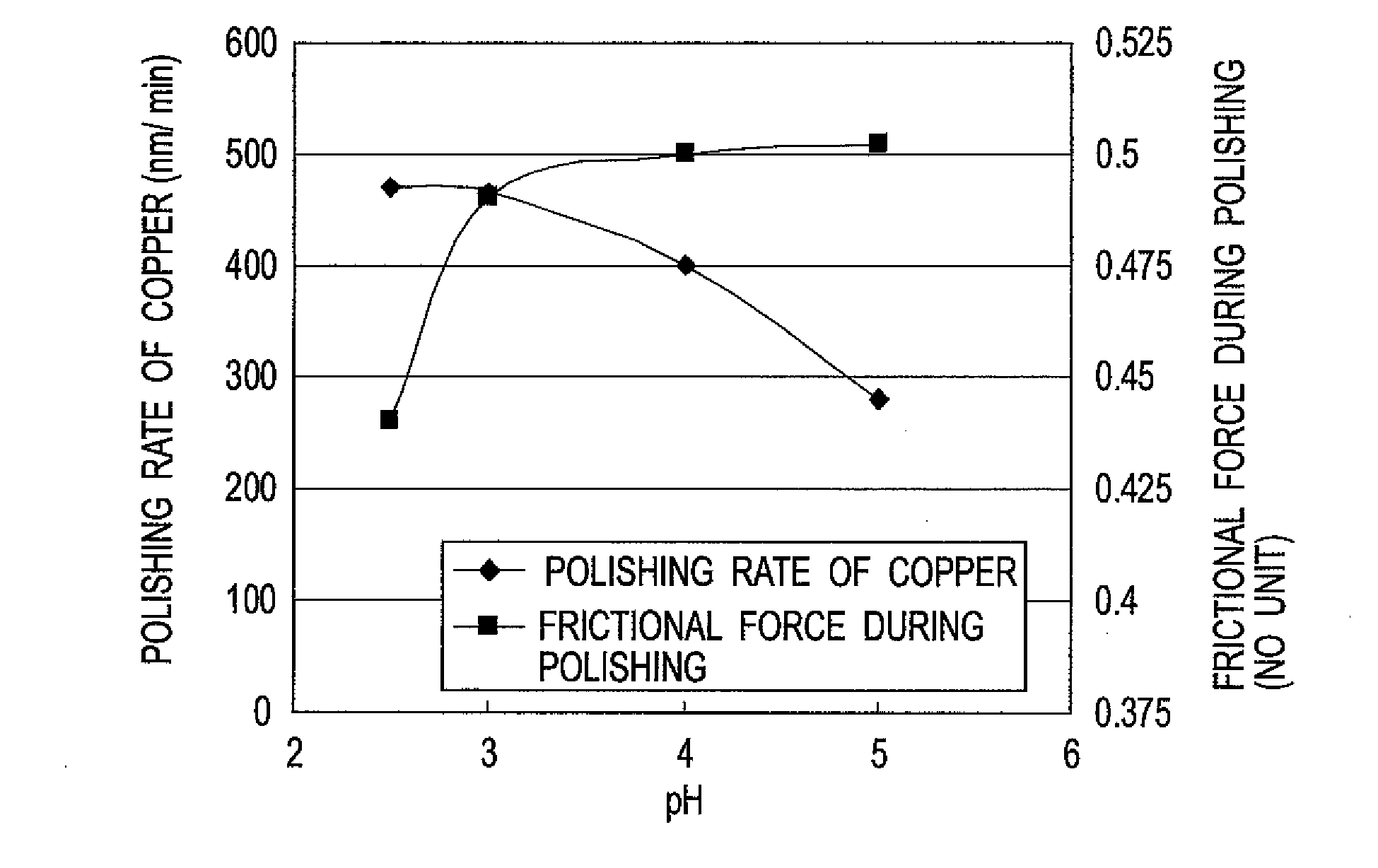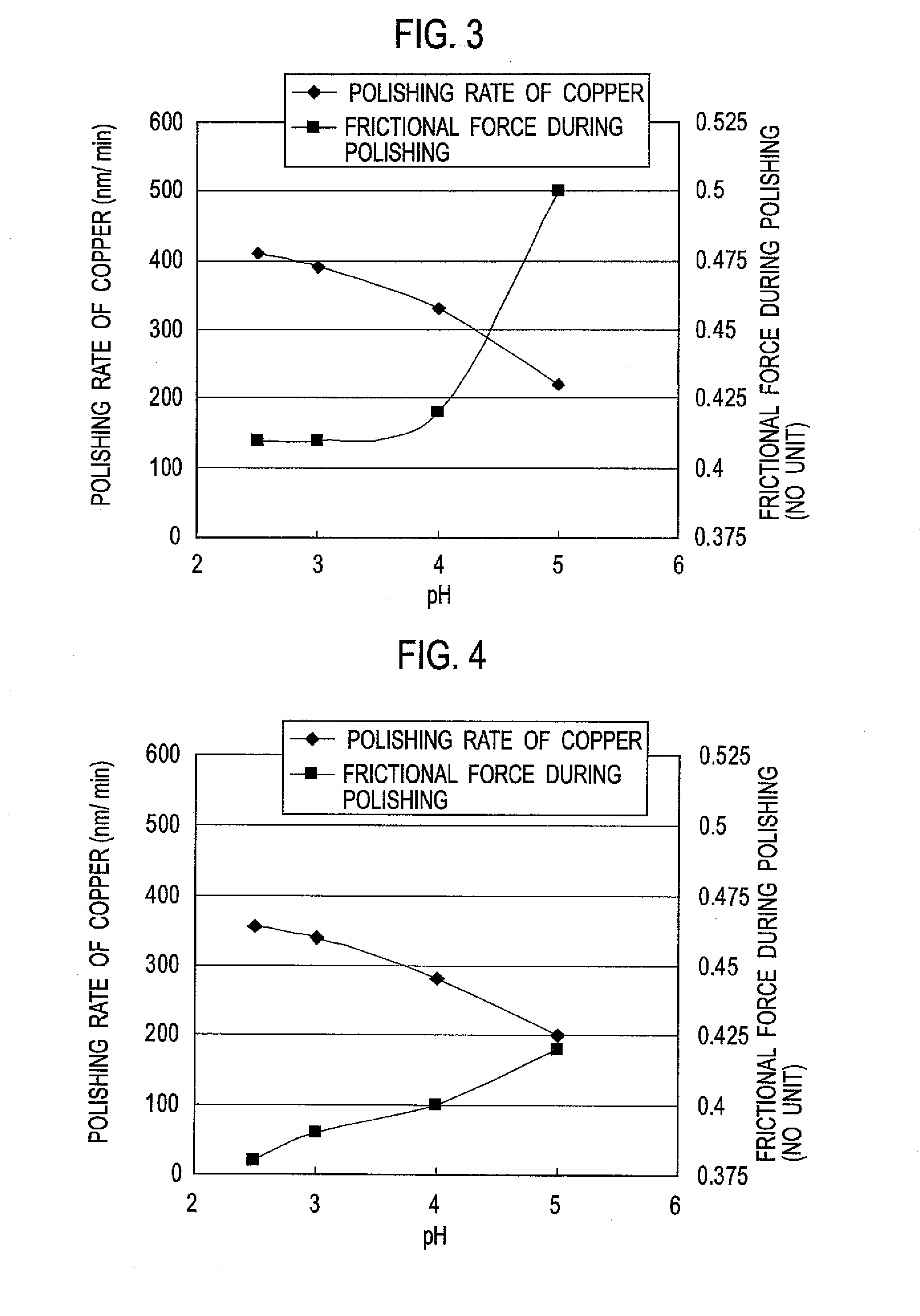Polishing liquid for metal and method of polishing
a technology of metal polishing liquid and polishing method, which is applied in the direction of detergent compositions, other chemical processes, chemistry apparatus and processes, etc., can solve the problems of microfabrication of copper-based metals, polishing method, and flatness deterioration, so as to reduce frictional force during polishing and improve flatness , the effect of high flatness
- Summary
- Abstract
- Description
- Claims
- Application Information
AI Technical Summary
Benefits of technology
Problems solved by technology
Method used
Image
Examples
example 1
[0122]With respect to the total mass of a polishing liquid, 30% by mass of a 30% (by mass) aqueous hydrogen peroxide solution (Guaranteed Reagent), 0.2% by mass of phosphoric acid, 0.2% by mass of benzotriazole, 0.15% by mass of citric acid, 0.08% by mass of 1,2,4-triazole, and 0.2% by mass of the water-soluble polymer (a) shown in Table 1 were mixed together, and then pure water was added thereto so that the total mass percentage was 100. Then, aqueous ammonia having a concentration of 28 to 30% by mass was added thereto to adjust the pH to 3 to prepare a polishing liquid (A).
example 2
[0123]A polishing liquid (B) was prepared in the same manner as in Example 1 except that the water-soluble polymer (a) was changed to the water-soluble polymer (b).
example 3
[0124]A polishing liquid (C) was prepared in the same manner as in Example 1 except that the water-soluble polymer (a) was changed to the water-soluble polymer (c).
PUM
| Property | Measurement | Unit |
|---|---|---|
| relative dielectric constant | aaaaa | aaaaa |
| relative dielectric constant | aaaaa | aaaaa |
| relative dielectric constant | aaaaa | aaaaa |
Abstract
Description
Claims
Application Information
 Login to View More
Login to View More - R&D
- Intellectual Property
- Life Sciences
- Materials
- Tech Scout
- Unparalleled Data Quality
- Higher Quality Content
- 60% Fewer Hallucinations
Browse by: Latest US Patents, China's latest patents, Technical Efficacy Thesaurus, Application Domain, Technology Topic, Popular Technical Reports.
© 2025 PatSnap. All rights reserved.Legal|Privacy policy|Modern Slavery Act Transparency Statement|Sitemap|About US| Contact US: help@patsnap.com



